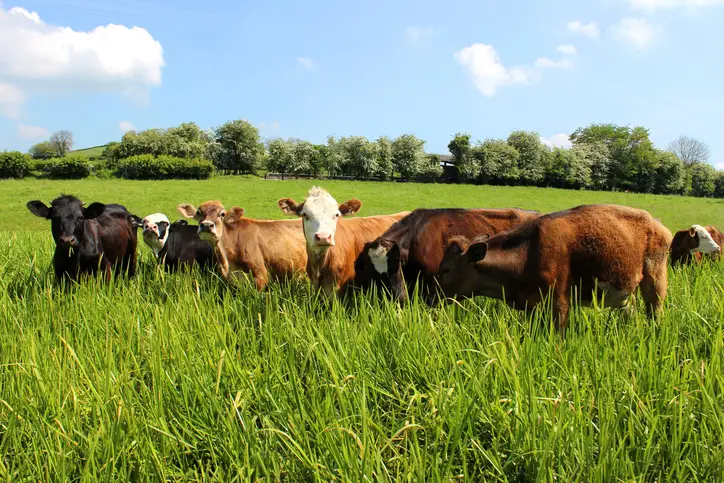New Feed Additives Show Promise for Reducing Enteric Methane

Kirsten Franzen
Research Economist

Mitigating methane emissions has emerged as a global priority in avoiding the worst impacts of global climate change. Unlike carbon dioxide, methane has a much higher global warming potential (GWP) and a shorter time in the atmosphere, so it can play a critical role in mitigating near-term emissions. The Global Methane Pledge ambitiously targets reducing methane by 30% by 2030, and aggressive strategies will be required to meet this goal.
One quarter of all global non-CO2 emissions come from livestock emissions, more than three-quarters of which comes from enteric fermentation. Enteric fermentation produces methane as part of the digestive process of ruminant livestock, including cows, goats, and sheep. This is a naturally occurring process and difficult to abate.
Historically, the primary strategies to lower enteric emissions have been through diet and livestock management. These have been proven effective at reducing emission intensity (emissions per unit of milk or meat production) but are insufficient to adequately address aggregate emissions. New technologies have been developed that show promise for mitigating enteric methane emissions in ruminant livestock - the primary source of enteric methane emissions globally. The two most promising of these feed additive types are a commercially produced compound known as 3-NOP and feed additives derived from a tropical strain of red seaweed. 3-NOP is already being produced by pharmaceutical companies such as DSM. Several start-ups and research organizations around the world, such as Blue Ocean Barns, Symbrosia and have been developing commercial red seaweed additives.
Researchers are cautiously optimistic about 3-NOP and red seaweed, and the substantial emissions reduction benefits. However, there are also some very real challenges.
Researchers are working on advancements in commercial seaweed production and transportation and cold supply chain, which are predicted to decrease costs. Also, feedlots are projected to expand due to increasing demand and intensification of livestock systems. These factors may increase the feasibility for additive adoption in countries with large livestock populations such as Brazil, Argentina, and China. Interventions such as sustained release are being developed for use in exclusively grazing and extensive systems. These treatments can potentially last weeks or even months after they have been fed to livestock so that they can still be effective while animals are grazing. The costs, efficacy, and availability of sustained release for livestock are still being developed and are unclear.
Even if the total methane emissions reduction from interventions such as 3-NOP and red seaweed feed additives are less than literature suggests, they nonetheless represent promising options to reduce methane from naturally occurring sources which have proven difficult to target. 3-NOP feed additives are available now, while red seaweed feed additives are being developed and are expected to be more commercially available in a few years. To address the urgency of global climate change, it is important for the global community to rapidly invest and advance R&D around these technologies to reduce the barriers, while policymakers aggressively speed up the processes to ensure safe regulation, production, and distribution.
RTI has been working with EPA for 20 years to develop marginal abatement costs of non-CO2 gases and these technologies are now incorporated into a suite of interventions to estimate emissions reduction. The updates here have emerged from recent work that builds on these analyses. RTI will present these findings at the Ninth International Symposium on Non-CO2 Greenhouse Gases in the summer of 2023.